 Search
Search

What exactly do tarot cards do?
Tarot cards have long intrigued and fascinated people with their enigmatic images and symbols. While often associated with fortune-telling and divination, the true purpose of tarot cards goes beyond mere prediction.
Tools for Self-Reflection:
At their core, tarot cards serve as powerful tools for self-reflection and introspection. By exploring the imagery and symbolism within the cards, individuals can gain insights into their subconscious thoughts, emotions, and life experiences.
Facilitating Decision-Making:
Tarot readings can help individuals navigate life's challenges and uncertainties by providing clarity and guidance. Whether facing difficult decisions or seeking direction, tarot cards offer perspectives and options that may not be immediately apparent, empowering individuals to make informed choices.
Connecting with Intuition:
Tarot readings encourage individuals to tap into their intuition and inner wisdom. As the cards are shuffled and drawn, intuition plays a crucial role in interpreting their meanings and messages. Trusting one's intuition during a tarot reading can lead to profound insights and revelations.
Promoting Spiritual Growth:
Beyond their practical applications, tarot cards can facilitate spiritual growth and personal development. Engaging with the archetypal imagery and universal themes depicted in the cards can deepen one's understanding of themselves, their relationships, and the world around them.
Building a Relationship with the Divine:
For some, tarot cards serve as a means of connecting with higher spiritual forces or the divine. Whether viewed as a form of meditation, prayer, or spiritual practice, tarot readings can offer a sense of connection and guidance from a higher source.

Which is the most powerful card in tarot?
Tarot, with its rich symbolism and mystical allure, comprises a deck of 78 cards, each carrying its own significance and energy. While every card holds value, there's one card that stands out as the most powerful in the deck.
The Major Arcana:
Within the tarot deck, the Major Arcana consists of 22 cards, each representing significant life events, archetypal energies, and spiritual lessons. Among these cards, one holds a unique position of power and influence.
The Fool: A Paradox of Power:
The Fool, numbered 0, is often regarded as the most powerful card in the tarot deck. Despite its seemingly innocuous appearance, The Fool embodies boundless potential, new beginnings, and the journey of the soul.
Symbolism and Meaning:
The Fool is depicted as a carefree figure embarking on a journey, symbolizing innocence, spontaneity, and fearlessness. The card encourages individuals to embrace the unknown, trust their instincts, and embark on new adventures with an open heart and mind.
The Power of Transformation:
What makes The Fool truly powerful is its transformative energy. By embracing The Fool's essence, individuals can transcend limitations, break free from old patterns, and embark on a path of personal growth and enlightenment.
The Power of Transformation:
What makes The Fool truly powerful is its transformative energy. By embracing The Fool's essence, individuals can transcend limitations, break free from old patterns, and embark on a path of personal growth and enlightenment.

What are the four main tarot cards?
Tarot cards, with their intricate imagery and symbolic meanings, are divided into two main categories: the Major Arcana and the Minor Arcana. Among these, four cards hold particular significance as foundational symbols within the tarot deck.
The Major Arcana:
The Major Arcana consists of 22 cards that represent significant life events, archetypal energies, and spiritual lessons. Within this esteemed group, four cards stand out as cornerstones of the tarot journey.
The Fool:
The Fool, numbered 0, symbolizes new beginnings, boundless potential, and the journey of the soul. Represented as a carefree figure embarking on a path, The Fool encourages individuals to embrace adventure, trust their instincts, and take bold leaps of faith.
The Magician:
Numbered I, The Magician embodies manifestation, power, and transformation. With one hand pointing to the heavens and the other to the earth, The Magician represents the alignment of spiritual and material forces, urging individuals to harness their inner resources to manifest their desires.
The High Priestess:
Numbered II, The High Priestess represents intuition, mystery, and inner wisdom. Seated between the pillars of knowledge and intuition, she serves as a bridge between the conscious and subconscious realms, encouraging individuals to trust their intuition and explore the depths of their psyche.
The Empress:
Numbered III, The Empress symbolizes fertility, abundance, and nurturing energy. Depicted as a maternal figure surrounded by lush vegetation, she represents creativity, nourishment, and the cycles of life. The Empress encourages individuals to connect with their nurturing instincts and cultivate abundance in all areas of life.

Who can read tarot cards?
Tarot reading, an ancient practice steeped in mysticism and symbolism, has captured the imagination of people worldwide. While the art of tarot reading may seem reserved for a select few, in reality, it's a skill that can be learned and practiced by anyone.
Accessibility of Tarot Reading:
Contrary to popular belief, tarot reading is not limited to a specific group of individuals or professionals. Instead, it's accessible to anyone with an interest in exploring the mysteries of the tarot deck and a willingness to learn and develop their intuitive abilities.
Self-Taught Practitioners:
Many individuals become proficient tarot readers through self-study and practice. With the abundance of tarot guidebooks, online resources, and instructional materials available, aspiring readers can familiarize themselves with the meanings and symbolism of the cards at their own pace.
Formal Training and Workshops:
For those seeking structured guidance, there are numerous workshops, classes, and courses offered by experienced tarot practitioners and organizations. These educational opportunities provide hands-on instruction, practice exercises, and mentorship to help individuals hone their tarot reading skills.
Intuitive Development:
While understanding the traditional meanings of tarot cards is essential, intuition plays a significant role in tarot reading. Aspiring readers are encouraged to develop their intuitive faculties through meditation, mindfulness practices, and connecting with their inner guidance.
Ethical Considerations:
Regardless of their level of expertise, tarot readers should approach their practice with integrity, empathy, and respect for the individuals they read for. Upholding ethical standards and boundaries ensures a positive and empowering experience for both the reader and the querent.
Tarot cards have long intrigued and fascinated people with their enigmatic images and symbols. While often associated with fortune-telling and divination, the true purpose of tarot cards goes beyond mere prediction.
Tools for Self-Reflection:
At their core, tarot cards serve as powerful tools for self-reflection and introspection. By exploring the imagery and symbolism within the cards, individuals can gain insights into their subconscious thoughts, emotions, and life experiences.
Facilitating Decision-Making:
Tarot readings can help individuals navigate life's challenges and uncertainties by providing clarity and guidance. Whether facing difficult decisions or seeking direction, tarot cards offer perspectives and options that may not be immediately apparent, empowering individuals to make informed choices.
Connecting with Intuition:
Tarot readings encourage individuals to tap into their intuition and inner wisdom. As the cards are shuffled and drawn, intuition plays a crucial role in interpreting their meanings and messages. Trusting one's intuition during a tarot reading can lead to profound insights and revelations.
Promoting Spiritual Growth:
Beyond their practical applications, tarot cards can facilitate spiritual growth and personal development. Engaging with the archetypal imagery and universal themes depicted in the cards can deepen one's understanding of themselves, their relationships, and the world around them.
Building a Relationship with the Divine:
For some, tarot cards serve as a means of connecting with higher spiritual forces or the divine. Whether viewed as a form of meditation, prayer, or spiritual practice, tarot readings can offer a sense of connection and guidance from a higher source.

Which is the most powerful card in tarot?
Tarot, with its rich symbolism and mystical allure, comprises a deck of 78 cards, each carrying its own significance and energy. While every card holds value, there's one card that stands out as the most powerful in the deck.
The Major Arcana:
Within the tarot deck, the Major Arcana consists of 22 cards, each representing significant life events, archetypal energies, and spiritual lessons. Among these cards, one holds a unique position of power and influence.
The Fool: A Paradox of Power:
The Fool, numbered 0, is often regarded as the most powerful card in the tarot deck. Despite its seemingly innocuous appearance, The Fool embodies boundless potential, new beginnings, and the journey of the soul.
Symbolism and Meaning:
The Fool is depicted as a carefree figure embarking on a journey, symbolizing innocence, spontaneity, and fearlessness. The card encourages individuals to embrace the unknown, trust their instincts, and embark on new adventures with an open heart and mind.
The Power of Transformation:
What makes The Fool truly powerful is its transformative energy. By embracing The Fool's essence, individuals can transcend limitations, break free from old patterns, and embark on a path of personal growth and enlightenment.
The Power of Transformation:
What makes The Fool truly powerful is its transformative energy. By embracing The Fool's essence, individuals can transcend limitations, break free from old patterns, and embark on a path of personal growth and enlightenment.

What are the four main tarot cards?
Tarot cards, with their intricate imagery and symbolic meanings, are divided into two main categories: the Major Arcana and the Minor Arcana. Among these, four cards hold particular significance as foundational symbols within the tarot deck.
The Major Arcana:
The Major Arcana consists of 22 cards that represent significant life events, archetypal energies, and spiritual lessons. Within this esteemed group, four cards stand out as cornerstones of the tarot journey.
The Fool:
The Fool, numbered 0, symbolizes new beginnings, boundless potential, and the journey of the soul. Represented as a carefree figure embarking on a path, The Fool encourages individuals to embrace adventure, trust their instincts, and take bold leaps of faith.
The Magician:
Numbered I, The Magician embodies manifestation, power, and transformation. With one hand pointing to the heavens and the other to the earth, The Magician represents the alignment of spiritual and material forces, urging individuals to harness their inner resources to manifest their desires.
The High Priestess:
Numbered II, The High Priestess represents intuition, mystery, and inner wisdom. Seated between the pillars of knowledge and intuition, she serves as a bridge between the conscious and subconscious realms, encouraging individuals to trust their intuition and explore the depths of their psyche.
The Empress:
Numbered III, The Empress symbolizes fertility, abundance, and nurturing energy. Depicted as a maternal figure surrounded by lush vegetation, she represents creativity, nourishment, and the cycles of life. The Empress encourages individuals to connect with their nurturing instincts and cultivate abundance in all areas of life.

Who can read tarot cards?
Tarot reading, an ancient practice steeped in mysticism and symbolism, has captured the imagination of people worldwide. While the art of tarot reading may seem reserved for a select few, in reality, it's a skill that can be learned and practiced by anyone.
Accessibility of Tarot Reading:
Contrary to popular belief, tarot reading is not limited to a specific group of individuals or professionals. Instead, it's accessible to anyone with an interest in exploring the mysteries of the tarot deck and a willingness to learn and develop their intuitive abilities.
Self-Taught Practitioners:
Many individuals become proficient tarot readers through self-study and practice. With the abundance of tarot guidebooks, online resources, and instructional materials available, aspiring readers can familiarize themselves with the meanings and symbolism of the cards at their own pace.
Formal Training and Workshops:
For those seeking structured guidance, there are numerous workshops, classes, and courses offered by experienced tarot practitioners and organizations. These educational opportunities provide hands-on instruction, practice exercises, and mentorship to help individuals hone their tarot reading skills.
Intuitive Development:
While understanding the traditional meanings of tarot cards is essential, intuition plays a significant role in tarot reading. Aspiring readers are encouraged to develop their intuitive faculties through meditation, mindfulness practices, and connecting with their inner guidance.
Ethical Considerations:
Regardless of their level of expertise, tarot readers should approach their practice with integrity, empathy, and respect for the individuals they read for. Upholding ethical standards and boundaries ensures a positive and empowering experience for both the reader and the querent.


